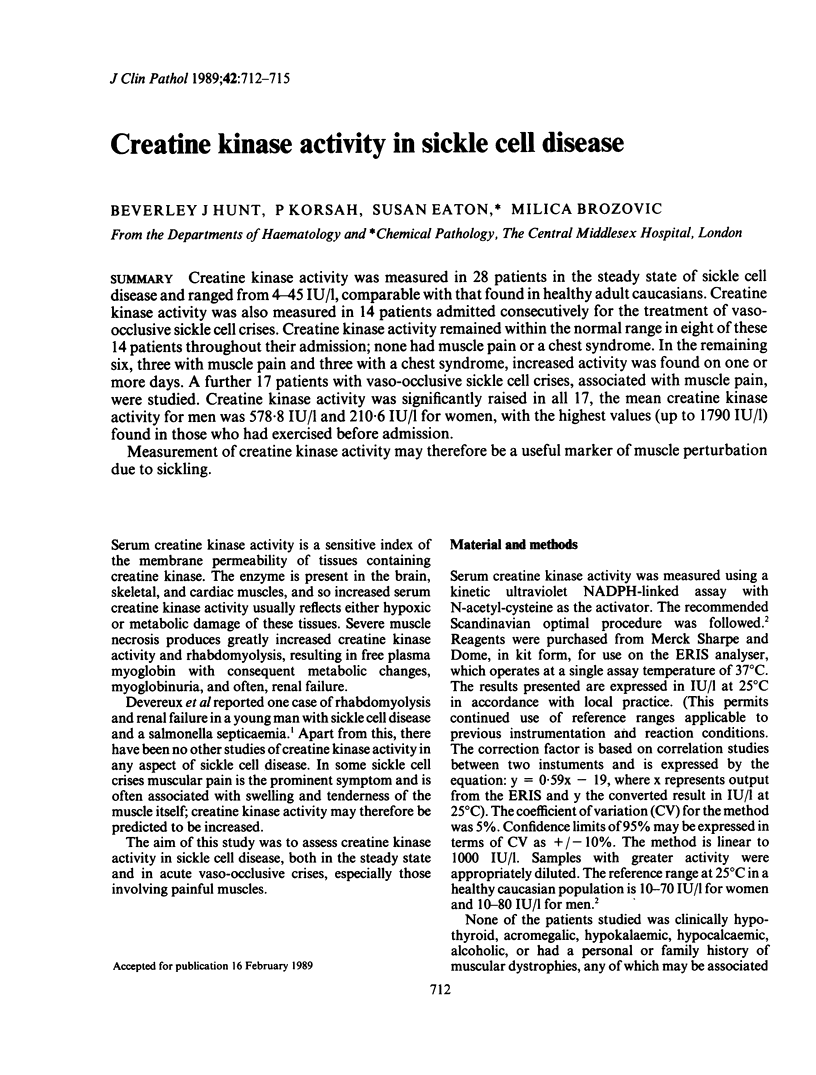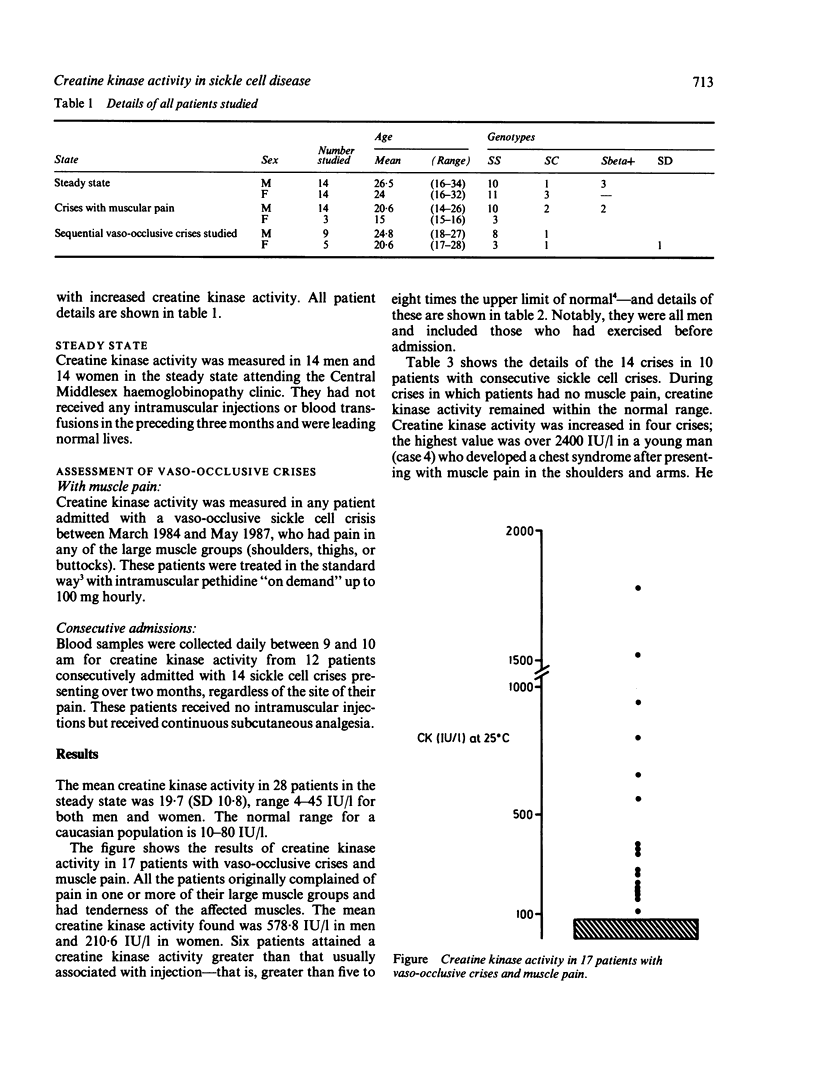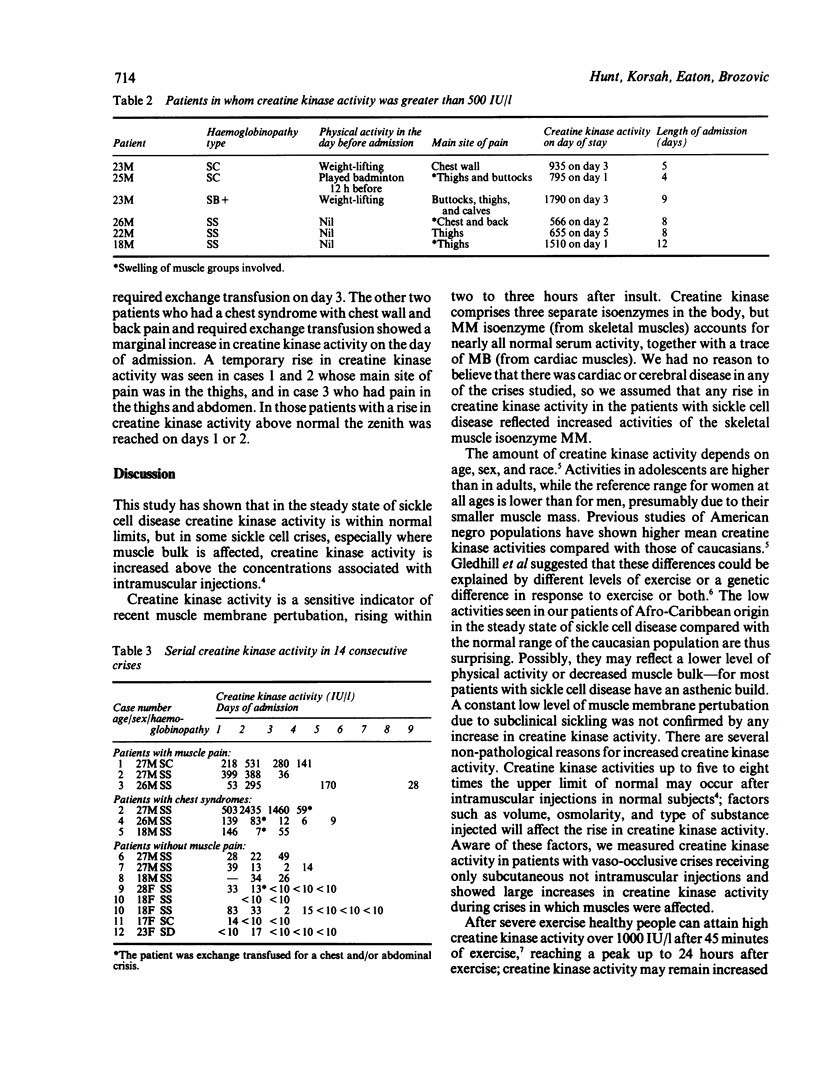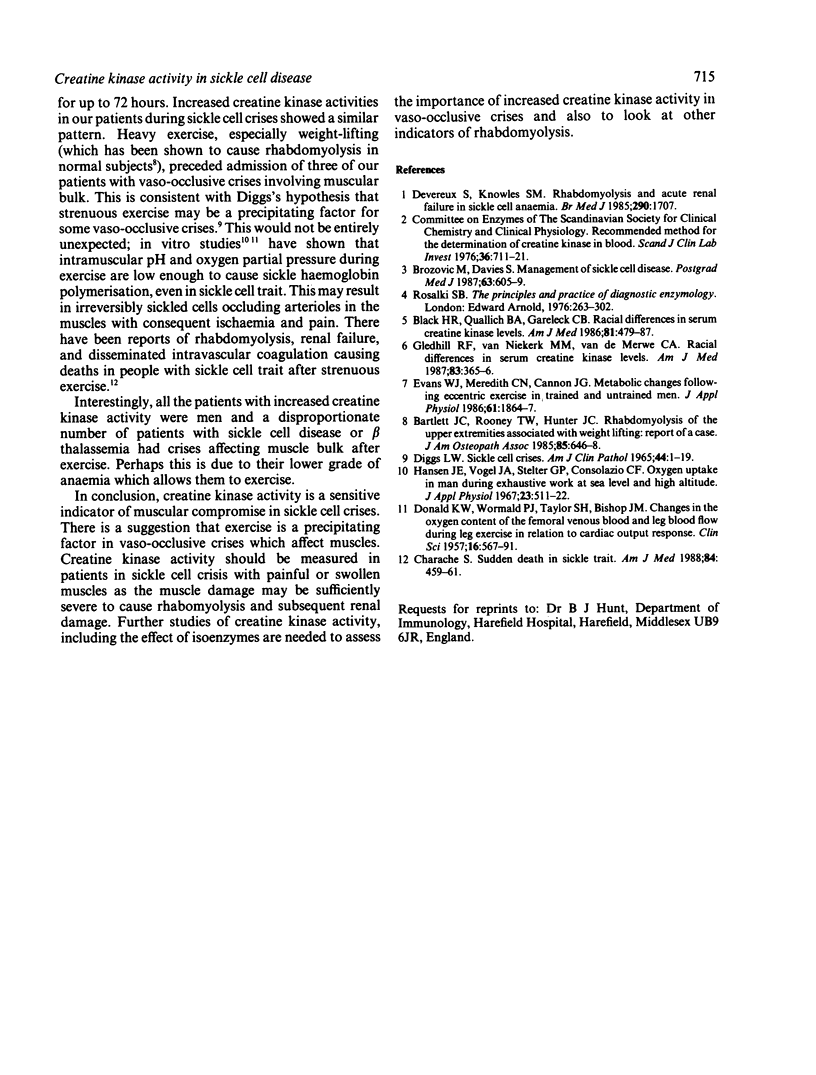Abstract
Creatine kinase activity was measured in 28 patients in the steady state of sickle cell disease and ranged from 4-45 IU/l, comparable with that found in healthy adult caucasians. Creatine kinase activity was also measured in 14 patients admitted consecutively for the treatment of vaso-occlusive sickle cell crises. Creatine kinase activity remained within the normal range in eight of these 14 patients throughout their admission; none had muscle pain or a chest syndrome. In the remaining six, three with muscle pain and three with a chest syndrome, increased activity was found on one or more days. A further 17 patients with vaso-occlusive sickle cell crises, associated with muscle pain, were studied. Creatine kinase activity was significantly raised in all 17, the mean creatine kinase activity for men was 578.8 IU/l and 210.6 IU/l for women, with the highest values (up to 1790 IU/l) found in those who had exercised before admission. Measurement of creatine kinase activity may therefore be a useful marker of muscle perturbation due to sickling.
Full text
PDF



Selected References
These references are in PubMed. This may not be the complete list of references from this article.
- Bartlett J. C., Rooney T. W., Hunter J. C. Rhabdomyolysis of the upper extremities associated with weight lifting: report of a case. J Am Osteopath Assoc. 1985 Oct;85(10):646–648. [PubMed] [Google Scholar]
- Black H. R., Quallich H., Gareleck C. B. Racial differences in serum creatine kinase levels. Am J Med. 1986 Sep;81(3):479–487. doi: 10.1016/0002-9343(86)90303-7. [DOI] [PubMed] [Google Scholar]
- Brozović M., Davies S. Management of sickle cell disease. Postgrad Med J. 1987 Aug;63(742):605–609. doi: 10.1136/pgmj.63.742.605. [DOI] [PMC free article] [PubMed] [Google Scholar]
- Charache S. Sudden death in sickle trait. Am J Med. 1988 Mar;84(3 Pt 1):459–461. doi: 10.1016/0002-9343(88)90266-5. [DOI] [PubMed] [Google Scholar]
- DONALD K. W., WORMALD P. N., TAYLOR S. H., BISHOP J. M. Changes in the oxygen content of femoral venous blood and leg blood flow during leg exercise in relation to cardiac output response. Clin Sci. 1957 Aug;16(3):567–591. [PubMed] [Google Scholar]
- Devereux S., Knowles S. M. Rhabdomyolysis and acute renal failure in sickle cell anaemia. Br Med J (Clin Res Ed) 1985 Jun 8;290(6483):1707–1707. doi: 10.1136/bmj.290.6483.1707. [DOI] [PMC free article] [PubMed] [Google Scholar]
- Evans W. J., Meredith C. N., Cannon J. G., Dinarello C. A., Frontera W. R., Hughes V. A., Jones B. H., Knuttgen H. G. Metabolic changes following eccentric exercise in trained and untrained men. J Appl Physiol (1985) 1986 Nov;61(5):1864–1868. doi: 10.1152/jappl.1986.61.5.1864. [DOI] [PubMed] [Google Scholar]
- Gledhill R. F., van Niekerk M. M., van der Merwe C. A. Racial differences in serum creatine kinase levels. Am J Med. 1987 Aug;83(2):365–366. doi: 10.1016/0002-9343(87)90715-7. [DOI] [PubMed] [Google Scholar]
- Hansen J. E., Vogel J. A., Stelter G. P., Consolazio C. F. Oxygen uptake in man during exhaustive work at sea level and high altitude. J Appl Physiol. 1967 Oct;23(4):511–522. doi: 10.1152/jappl.1967.23.4.511. [DOI] [PubMed] [Google Scholar]


